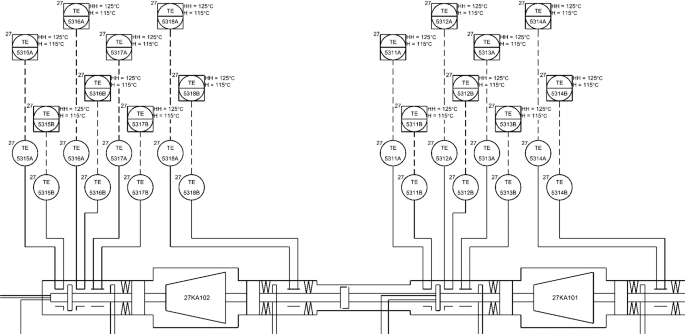Download the best royalty free images from Shutterstock, including photos, vectors, and illustrations. Engineering Drawing Lecture Notes Ppt MOBI Engineering Drawing Lecture Notes Ppt Eventually, you will very discover a further experience and skill by spending more cash. Multiview Drawing: PDF: Studio Exercise on 13. Drawing exercises 6. May 09, 2017 Title: Civil Engineering Drawing Lecture Notes PDF Author: Lon Little Subject: Free Download Civil Engineering Drawing Lecture Notes PDF Keywords: Read Online Civil Engineering Drawing Lecture Notes PDF, Free. Engineering Drawing Date: Lecture 15 2. All dimensions and notes. Engineering Drawing & CAD Page 1 of 53 Sanjay Sharma School. Engineering Drawing (Lecture Note) November 2018. Kano University of Science & Technology; Download full-text PDF Read full-text. Download full-text PDF. Engineering drawings communicate.
Lecture Notes Pdf
Engineering Drawing Pdf 1st Year Notes & PPTs – EDP Pdf Notes
Engineering Drawing Pdf
In this Engineering Drawing 1st Year Notes Contents :-
- Scales
- Engineering Curves – I
- Engineering Curves – II
- Loci of Points
- Orthographic Projections – Basics
- Conversion of Pictorial View into Orthographic Views
- Projections of Points and Lines
- Projection of Planes
- Projection of Solids
- Sections & Development
- Intersection of Surfaces
- Isometric Projections
- Exercise
- Solutions – Applications of Lines.
Engineering-Drawing-Part-1
Engineering-Drawing-Part-2
Engineering-Drawing-Part-3
Engineering-Drawing-Part-4
Engineering-Drawing-Part-5
Engineering-Drawing-Part-6
Engineering-Drawing-Part-7
Note : Please watch the video to know the best way to understand the ppt and its usage before you download the file.
Follow us on FB – Smartzworld
Frequently Asked Questions
Q1: What is a circle and its components while considering engineering drawing?
A1: A closed curve which has a center point and all the points on the curve are at the same distance from the center point. Major components of the circle include,
- Diameter: The straight distance from a outside curved surface to the opposite outside curved surface through the center point
- Radius: The distance between the center point and the outside curved surface is called radius. Half the diameter is called radius. It is used to set the compass when drawing a diameter
- A central angle: An angle formed by two radial line from the center of the circle
- Sector: Area of a circle lying between two radial lines and the circumference
- Quadrant: A sector with a central angle of 90 degree and with one of the radial lines oriented horizontally
- Chord: A straight line whose opposite ends terminate on the circle
- Segment: Smaller portion of the circle which is separated by the chord
- Concentric circles: Two or more circles with a same center point
- Eccentric circles: Two or more circle with out a common or same center point
- Semi circle: Half of a circle
Q2: What is multi view projections?

A2: Primary means of graphic communication which is used in engineering work is called multi view orthographic projection. To convey ideas, shapes, dimension, procedures, for the manufacture or the construction, drawings are used in engineering. Orthographic projection is the basis of all descriptive geometry procedures. Where as, mutli view projection is a procedure that can be used to completely describe an object’s dimension or shape using two or more (multi) views that are normally projected at 90 degree to each other or at any other specified angles. Engineering work is completely based on this method of projection. Final design is then reproduced and sent to the job site or the shop.
Q3: What are the two fundamental methods of shape representation used in engineering drawing?
A3: Theory of projection is the base for the background information necessary to shape representation in graphics. There are two fundamental methods of shape representation given below
- Orthographic view: This view consists of two or more separate views of an object which has been taken from different directions, generally at right angles to each other and arranged relative in a definite way to each other. Each view shows the shape of an object for a particular view direction and collectively the views describe the given object completely.
- Pictorial view: For this view either oblique projection or perspective projection is used in which the object is oriented behind and projected up on a single plane.
Q4: What are the four principal types of projection?
A4: Four principal type of projection are,

- Multi view projection
- Axonometric projection
- Oblique projection
- Perspective projection

Q5: What are the classification of axonometric projections?
A5: Different classification of axonometric projections are
- Isometric projection
- Dimetric projection
- Trimetric projection
Q6: What are the different multisection views?
A6: Different kinds of multi section used today are,
- Full section
- Offset section
- Half section
- Broken our section
- Revolved section
- Auxillary section
Q7: What are the classification of lines in orthographic projection?
A7: Classification of lines in orthographic projection is based on parallelism, direction, and type
Classification based on parallelism
- A horizontal line
- A frontal line
- A profile line

Classification based on direction
- Vertical line
- Level line
- Inclined line
Classification based on type
- Oblique
- Foreshortened
- Point view
- True length
Q8: What is the purpose of dimensioning and what are the guidelines?
Lecture Notes Free Download
A8: To provide a clear and complete description of an object is the main purpose of dimensioning. A pure, complete set of dimension permits only one interpretation needed to construct the part. The process of dimensioning should follow the below guidelines
- Accuracy
- Clearness
- Completeness
- Readability
Q9: What are the examples of engineering drawing?
A9:
How useful was this post?
Click on a star to rate it!
Average rating 4.7 / 5. Vote count: 43
No votes so far! Be the first to rate this post.
